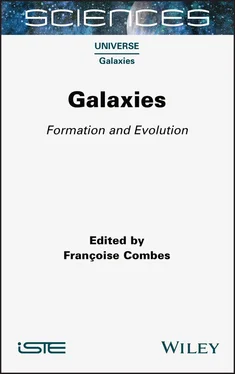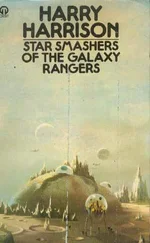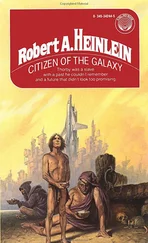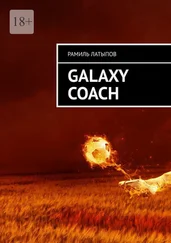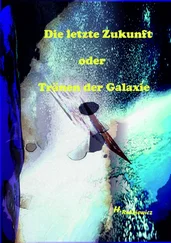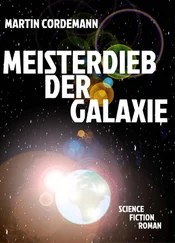1 Cover
2 Title Page SCIENCES Universe , Field Director – Fabienne Casoli Galaxies , Subject Head – Françoise Combes
3 Copyright First published 2020 in Great Britain and the United States by ISTE Ltd and John Wiley & Sons, Inc. Apart from any fair dealing for the purposes of research or private study, or criticism or review, as permitted under the Copyright, Designs and Patents Act 1988, this publication may only be reproduced, stored or transmitted, in any form or by any means, with the prior permission in writing of the publishers, or in the case of reprographic reproduction in accordance with the terms and licenses issued by the CLA. Enquiries concerning reproduction outside these terms should be sent to the publishers at the undermentioned address: ISTE Ltd 27-37 St George’s Road London SW19 4EU UK www.iste.co.uk John Wiley & Sons, Inc. 111 River Street Hoboken, NJ 07030 USA www.wiley.com © ISTE Ltd 2020 The rights of Françoise Combes to be identified as the author of this work have been asserted by her in accordance with the Copyright, Designs and Patents Act 1988. Library of Congress Control Number: 2020942773 British Library Cataloguing-in-Publication Data A CIP record for this book is available from the British Library ISBN 978-1-78945-012-5 ERC code: PE9 Universe Sciences PE9_8 Formation and evolution of galaxies PE9_9 Clusters of galaxies and large scale structures
4 Introduction
5 1 The Classification of Galaxies 1 The Classification of Galaxies Ronald BUTA Astrophysics, University of Alabama, Tuscaloosa, USA The classification of the forms of galaxies in a well-defined visual system is a critical step in the study of galaxies as physical objects. The Comprehensive de Vaucouleurs revised Hubble-Sandage (CVRHS) system is currently the most detailed approach that can be applied effectively to more than 95% of all galaxies. This chapter describes the different types of galaxies and the factors that may determine various morphological features.
1.1. Introduction 1.2. Classes of galaxies 1.3. Elliptical galaxies 1.4. Spiral galaxies 1.5. S0 galaxies 1.6. Magellanic spiral and irregular galaxies 1.7. Dwarf elliptical, S0, and spheroidal galaxies 1.8. Edge-on galaxies 1.9. Morphology of interacting and merging galaxies 1.10. General properties along the CVRHS sequence 1.11. Other approaches to galaxy classification 1.12. Interpretations of morphology 1.13. Artificial galaxies and the future of galaxy classification 1.14. References
6 2 Our Galaxy, the Milky Way 2.1. Introduction 2.2. Baryonic discs and their spiral structure 2.3. The central kiloparsecs: the bar and the bulge 2.4. The stellar halo 2.5. On the dark matter content and shape, as inferred from rotation curves and stellar streams 2.6. Dissecting the global structure: stellar kinematics, abundances and ages 2.7. Reconstructing the Milky Way evolution 2.8. Perspectives 2.9. References
7 3 Early-type Galaxies 3.1. Introduction 3.2. General properties: components and morphology 3.3. Zoom on the stellar component 3.4. Dynamics of ETGs 3.5. Formation and evolution processes 3.6. Conclusion 3.7. References
8 4 Spiral Galaxies 4.1. Introduction 4.2. Blue and red galaxies: quenching star formation 4.3. Spiral galaxies: density waves or not? 4.4. Bars: drivers of evolution 4.5. Environment of spiral galaxies 4.6. Conclusion 4.7. References
9 5 Galaxy Mergers and Interactions through Cosmic Time 5.1. Introduction 5.2. The physics of merging 5.3. The merger history of galaxies 5.4. The added value of mergers 5.5. Summary 5.6. Acknowledgments 5.7. References
10 6 Cosmic Evolution of Galaxies 6.1. Introduction 6.2. Characteristics of galaxies used to define their cosmic evolution 6.3. Starbursts, secular evolution and universality of star formation 6.4. Detection of distant galaxies 6.5. Cosmic history of galaxies 6.6. Origin of the cosmic history of galaxies 6.7. Conclusion 6.8. References
11 List of Authors
12 Author Biographies
13 Index
14 End User License Agreement
1 Chapter 1 Figure 1.1. The Hubble (1936) “tuning fork” representation of galaxy morphology Figure 1.2. The Hubble–Sandage (Sandage 1961) revised “tuning fork” representati... Figure 1.3. The de Vaucouleurs (1959) revised Hubble-Sandage (VRHS) system of ga... Figure 1.4. A cross-section through the CVRHS system of families and varieties i... Figure 1.5. Examples of elliptical galaxies ranging from round in apparent shape... Figure 1.6. E +galaxies are generally elliptical galaxies with very subtle trace... Figure 1.7. Examples of disky and boxy elliptical galaxies. Generally, the disky... Figure 1.8. Twelve examples of dust-lane (d.l.) early-type galaxies, including e... Figure 1.9. A sequence of stages for non-barred galaxies in the VRHS/CVRHS syste... Figure 1.10. A sequence of stages for barred galaxies in the VRHS/CVRHS system Figure 1.11. A sequence of increasing apparent bar strength Figure 1.12. Bars showing enhanced “handles”, or ansae. The features appear in s... Figure 1.13. Three edge-on galaxies showing boxy/peanut-type bulges Figure 1.14. Examples of different inner varieties Figure 1.15. Examples of spiral galaxies having a nuclear ring Figure 1.16. Examples of different types of outer features. The feature type is ... Figure 1.17. Outer resonant features. The feature type is in the upper right of ... Figure 1.18. Twelve examples of barred galaxies having a “barlens”, which refers... Figure 1.19. Stage sequences for both barred and non-barred S0 galaxies Figure 1.20. Magellanic irregular galaxies Figure 1.21. Edge-on galaxies from stage Sa to stage Im. The “sp” stands for “sp... Figure 1.22. Embedded disks and thick/thin disks. The main embedded disk cases s... Figure 1.23. Examples of interacting and merging galaxies Figure 1.24. Possible examples of cataclymic ring galaxies. Top row: collisional... Figure 1.25. Distribution of CVRHS stages from (a) Buta (2019; EFIGI), (b) Buta ... Figure 1.26. Systematics of CVRHS classifications from Buta (2019; EFIGI). The s... Figure 1.27. Images of four relatively isolated grand-design spirals (Buta et al... Figure 1.28. Three galaxies showing outer resonant subclass features. The white ...
2 Chapter 2 Figure 2.1. Left panel: The Sb-type barred spiral galaxy UGC 12158, often consid...Figure 2.2. Left column, top panel: Map of the surface density of HI in the Gala...Figure 2.3. Left column: Vertical distribution of SDSS stellar counts at the sol...Figure 2.4. The Galactic warp as traced by classical Cepheids (Skowron et al. 20...Figure 2.5. Top-left panel: The distribution of HII regions overlaid with a poss...Figure 2.6. Top panels: Regular orbits supporting a boxy/peanut-shaped bulge (le...Figure 2.7. Left panels: The Galactic bulge as observed in the near-infrared by ...Figure 2.8. Top figure: A map of the sky showing the numbers of stars counted in...Figure 2.9. Heated disc stars in the stellar halo, as found in a N-body simulati...Figure 2.10. The circular velocity curve of the Milky Way (black points), betwee...Figure 2.11. Top panel: [Mg/Fe] abundances versus [Fe/H] for a sample of stars a...Figure 2.12. Left panels: [Mg/Fe] and [α/Fe] abundances versus [Fe/H] for a samp...Figure 2.13. [α/Fe] versus age relation for a sample of disc stars at the solar ...Figure 2.14. Top panels: Mono-abundance populations as a function of their posit...Figure 2.15. Top panel: Sky distribution of stars possibly associated with Gaia ...Figure 2.16. Rotational versus radial velocity of metal-poor stars at a few kpc ...Figure 2.17. Observed bulge kinematics (black points) compared to models of a Mi...Figure 2.18. Left panels: In-plane (top) and edge-on (bottom) projections of the...Figure 2.19. The star formation history of the Galactic disc, as derived from th...
Читать дальше
